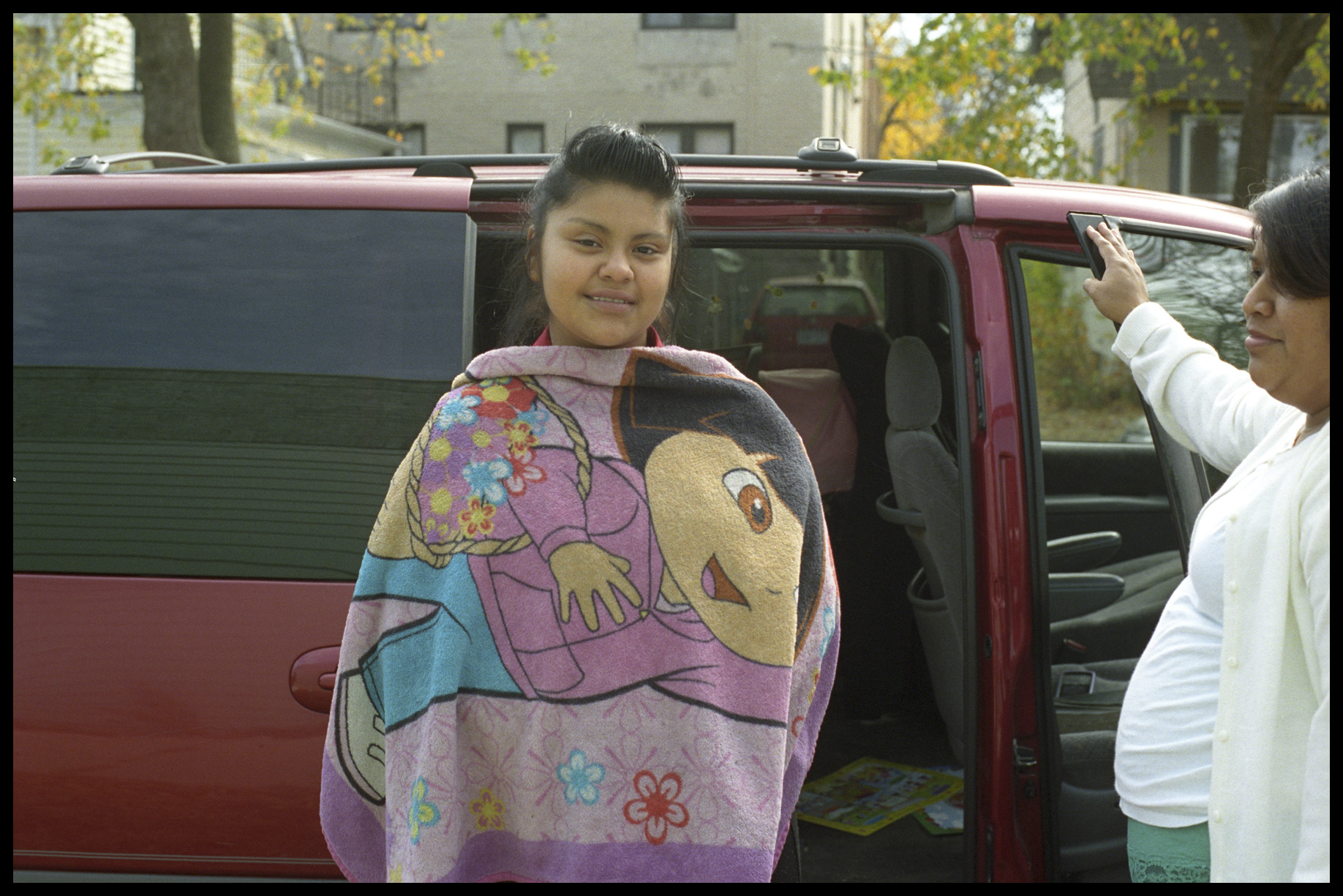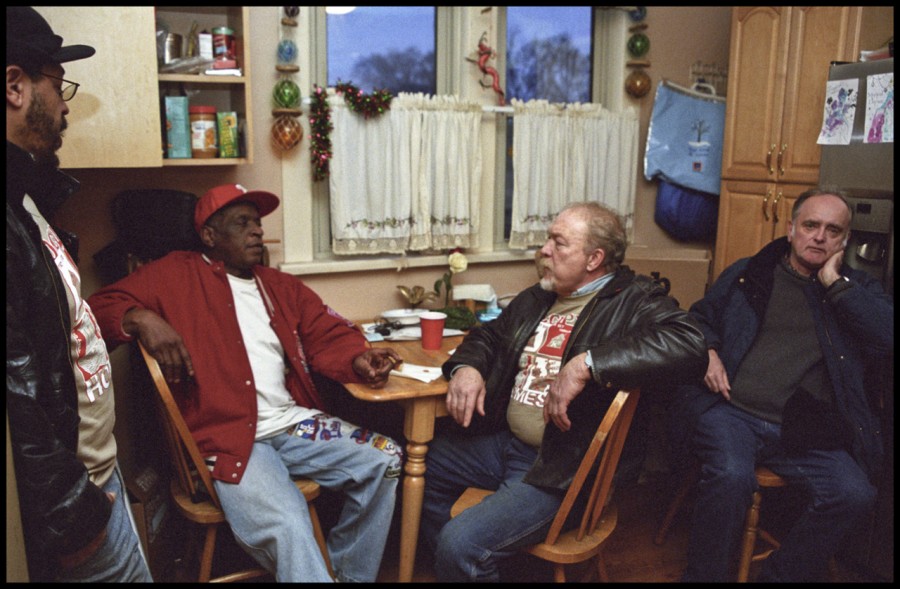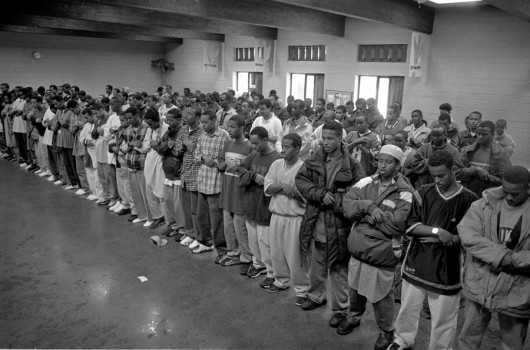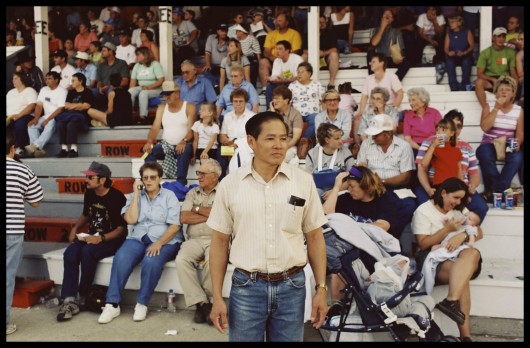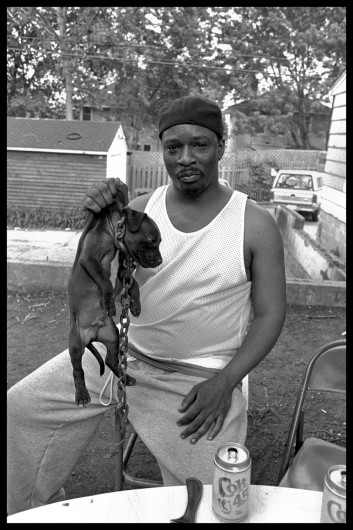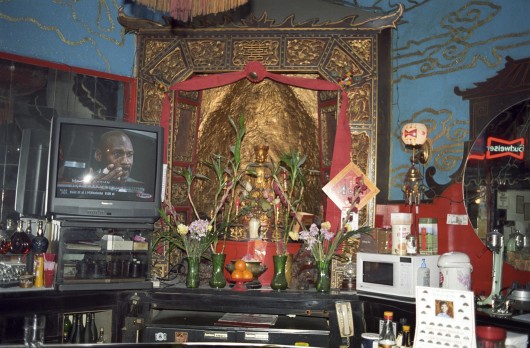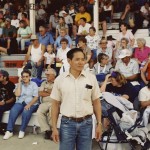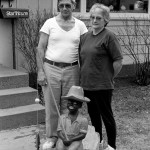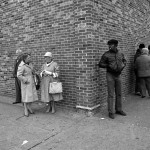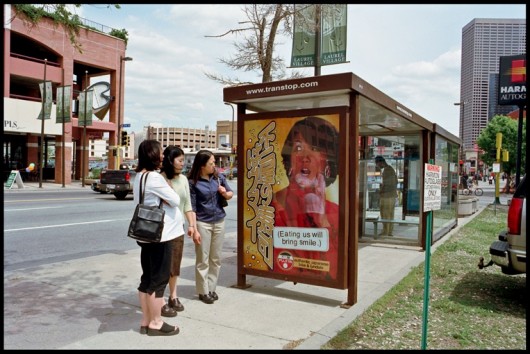
It’s an old canard: a picture is worth a thousand words. In the case of this photo, a viewer with nothing to go off but the image could follow a thousand trails. The commodification of food, fetishizing of a culture, or casual racism expressed by the advertisement might catch your eye. You may also see fascination with representations of self, cultural confusion, wholesale mockery, or keen, winking marketers at work. For Wing Young Huie and Doug Hartmann, too, the picture, taken by Wing in downtown Minneapolis and featuring three Asian American women checking out an ad for Japanese restaurant Fuji-Ya, elicited very different responses.
Doug:
I guess I did request food for thought, didn’t I? It strikes me that looking sociologically at food and eating is a tricky challenge: the emphasis is always to put eating and food in the social contexts that others often take for granted and that can be hard to represent in the first place. How to capture not just the physical “food” and its biological consumption, but all of the other phenomena that surround food and imbue it with meaning and importance? Plus, American culture adds layers to food, from how it’s represented on television (there are whole networks devoted to literal consumption) to how it’s advertised—here with a ridiculous tagline observed by women at a bus stop, within a street- and cityscape. This image is fascinating in its sociological aesthetics.
Wing:
Although the photo is part of my series “Eat,” I was doing a project on adoptive families when I took it. Each of these women is adopted from Korea and, though they grew up in different family structures, they have in common that they all had white parents. When they started hanging out, they noticed that people stared at them when they walked together in public. Here, they are staring: at a sushi restaurant advertisement with racially loaded—ironic?—messages.
Fuji-Ya is a hip Japanese restaurant, and this promotion is a play on fortune cookie messages, with their broken English laced with sexual innuendo. Another ad for the restaurant has the message “From this position you will receive fun.”
I, too, think the photo is hilarious, but can see that, no matter the intent, some will find it offensive. But, then again, my English is not broken.
Doug:
I’m not sure that the new literature on the sociology of food would have come to mind had I not been prompted, already thinking about “food for thought.” Now that I read your reply and know the background of the photo, I feel like I can’t help but shift toward race and urban space. I’ve been mulling over how I put your image in the “food” box so quickly, neglecting all of the other possible themes.
All of us face huge challenges in grasping and representing the whole buzzing complexity of the worlds around us. It seems so improbable, almost impossible to get at it all. And when we try, we do so through particular lenses and categories of analysis that invariably—necessarily—come at the expense of others. It’s a curse as much as a challenge.
To quote James Baldwin’s classic essay “Notes of a Native Son,” “Our passion for categorization, life neatly fitted into pegs, has led to an unforeseen, paradoxical distress; confusion, a breakdown of meaning. These categories which were meant to define and control the world for us have boomeranged us into chaos; into which limbo we whirl, clutching the straws of our definitions.”

